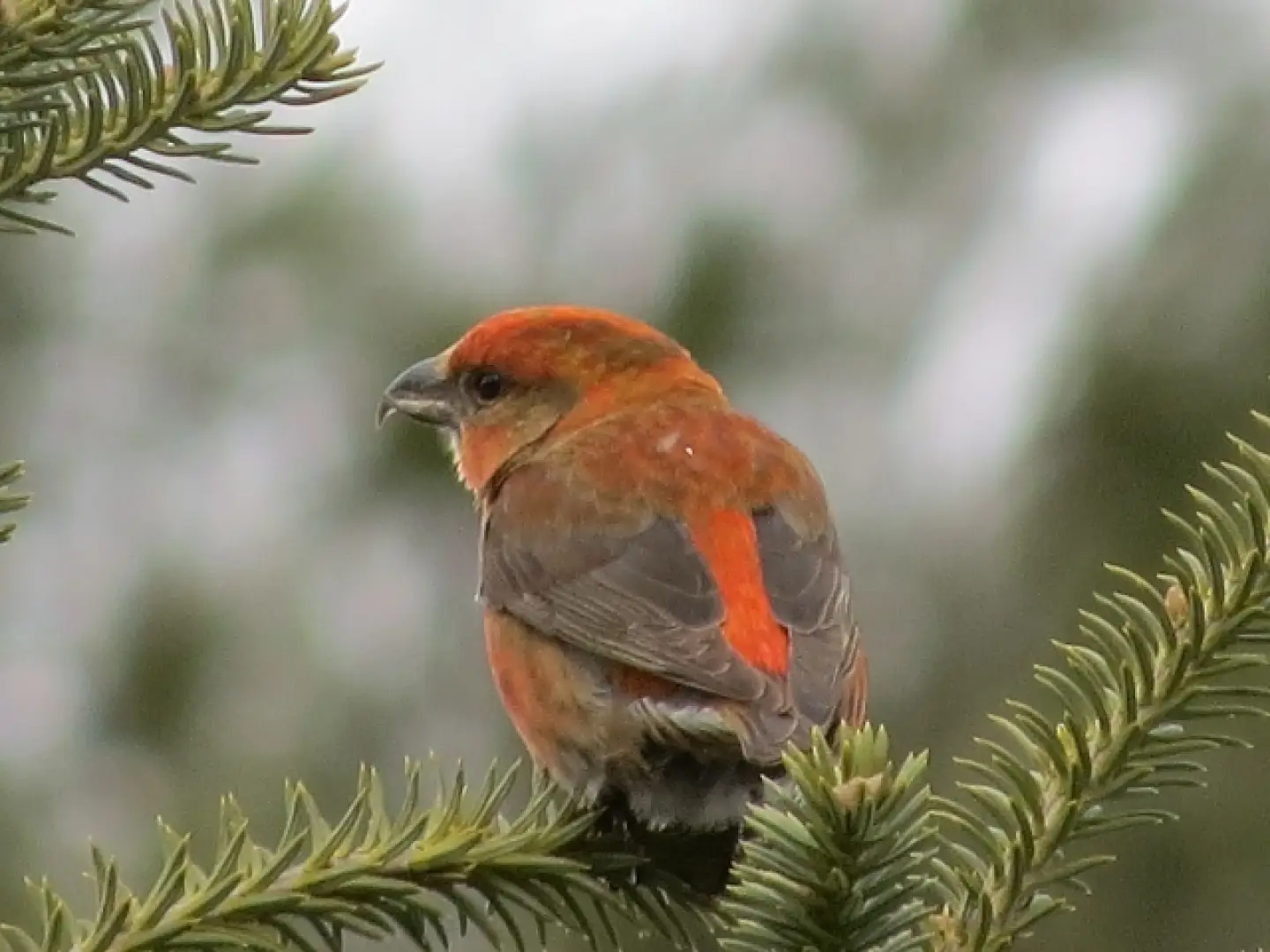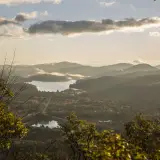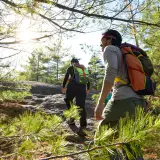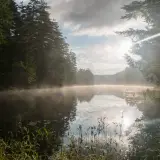1-in-20 Year Food Crop
The Adirondack summer-fall-winter of 2017-2018 featured a 1-in-20 year food crop on the trees. Every coniferous tree species had excellent to bumper cone crops, birch trees were covered with catkins, and there was abundant fruit on bushes and trees. All that available fruit allowed quite a few American Robins to over-winter.
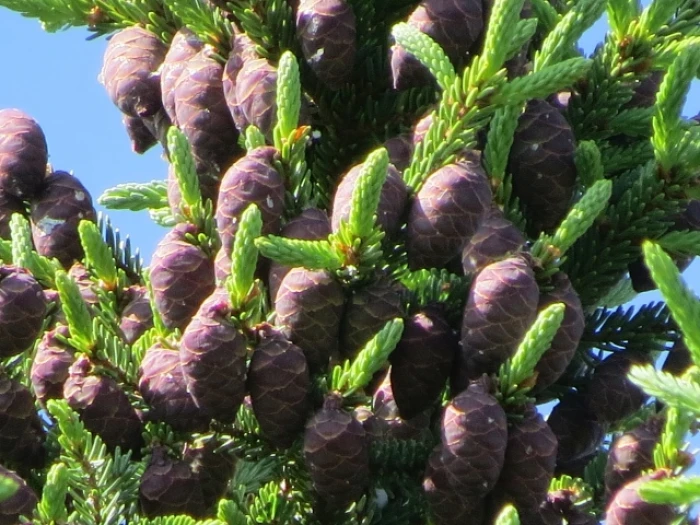
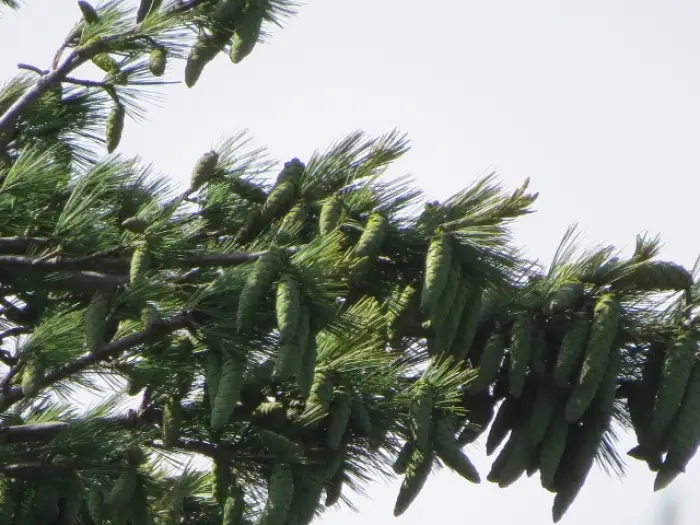
A Wonderful Season to see Winter Finches
As a result of the abundant cone seeds on the conifers, it was a terrific season to see winter finches. Red and White-winged Crossbills, which are fascinating nomadic species, nested during the summer of 2017 and many more irrupted in late fall to take advantage of this huge food source. Both species began nesting again in February - March.
Crossbills can nest at any time of year, as long as they have plenty of cone seeds to feed their young. Our central Adirondack region, including Long Lake, Newcomb, Minerva, and North Hudson, was a magnetic for visiting birders this winter. This spring, we will see many heavily-striped juvenile Red and White-winged Crossbills among family groups.
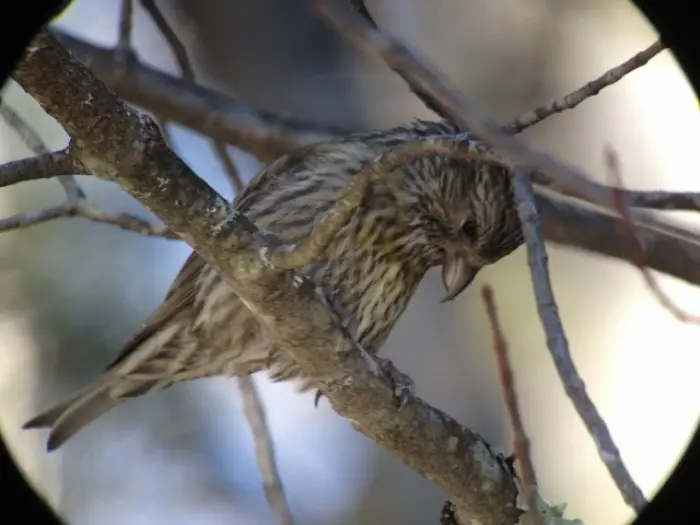
After large winter irruptions, crossbills will continue to be observed into the spring and summer before they move on to another region with plenty of food.
White-winged Crossbills have been feeding on Black, Red, and White Spruce seeds in addition to Tamarack seeds.
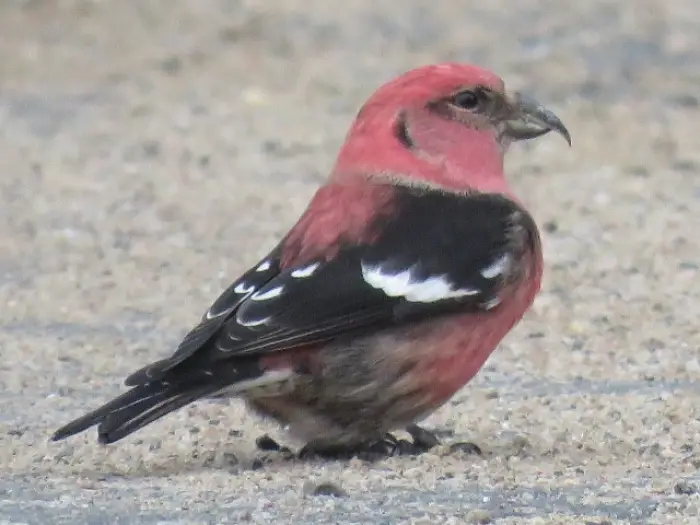
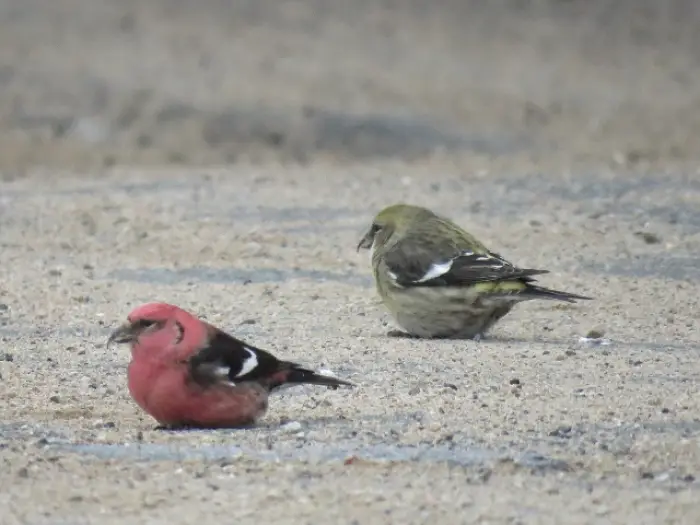
Red Crossbills have been observed feeding on the seeds of Red and White Pines, Tamarack, Red Spruce, and Hemlock.
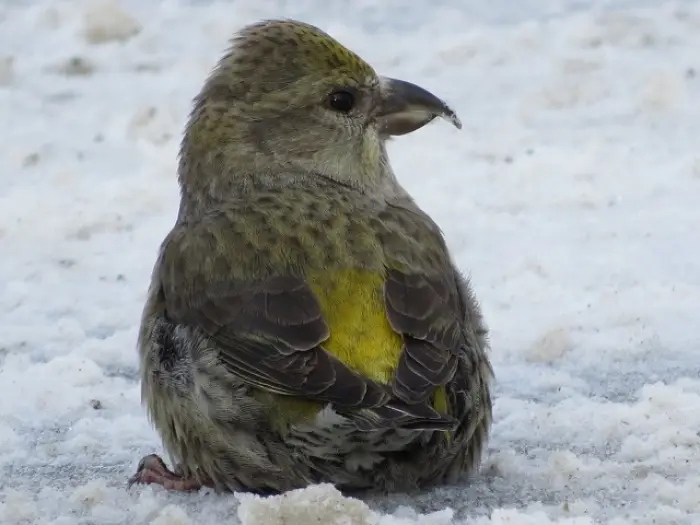
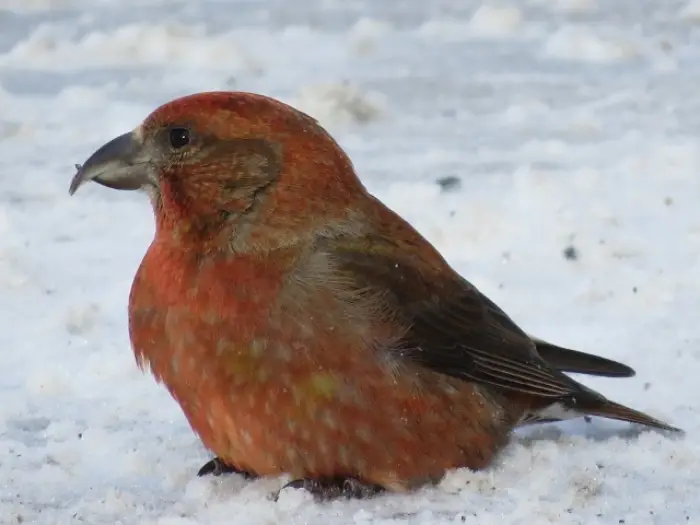
Pine Siskins irrupted in enormous numbers this winter and it seems as if they can be found in every bush and tree! They have been observed feeding on birch catkins, and the seeds of White Pine, Balsam Fir, Hemlock, and White Cedar.
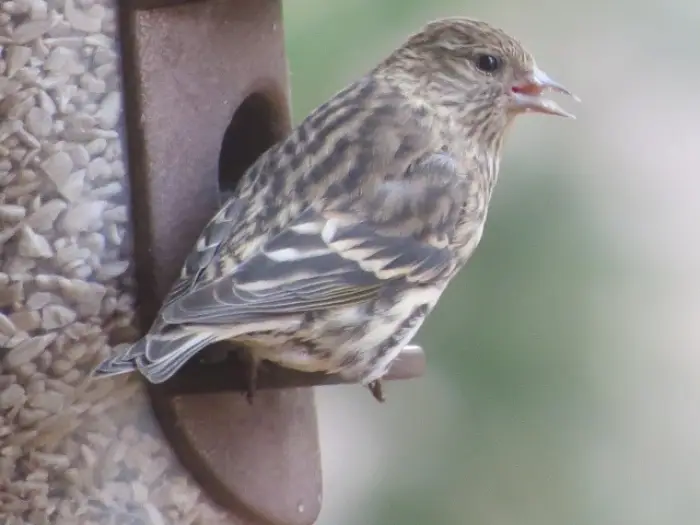
Purple Finches and American Goldfinches, species which normally leave our central Adirondack region in winter, over-wintered this year. The huge numbers of American Goldfinches at Adirondack feeders was a continuous topic of conversation all winter.
Signs of Spring
“Winter” is hanging on with cold and snow, but already, signs of spring are all around us. Our year-round Brown Creepers and Golden-crowned Kinglets have begun to sing. I observed the first migrant Golden Eagle moving north through our area on March 16. Snow Bunting males are beginning to head back to the Arctic.
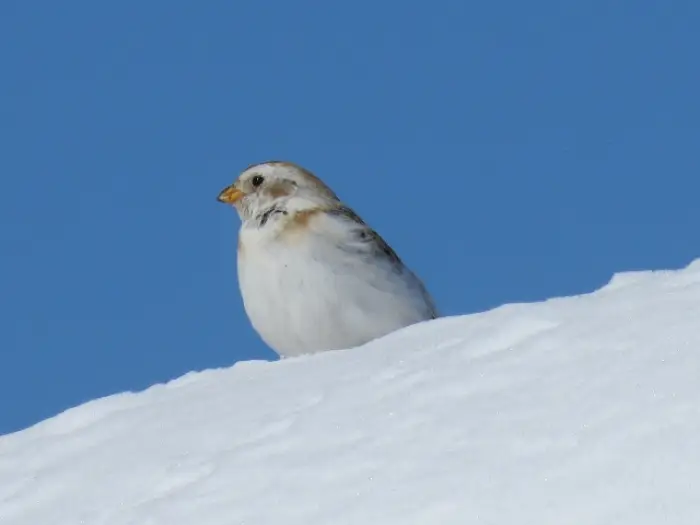
Hooded Mergansers appear first on any small opening in the ice on ponds, lakes, brooks, and rivers. I observed 3 males on the Hudson River in Newcomb on March 16.
Year-round Gray Jays are currently nesting and their young will fledge in late April.
Red-winged Blackbirds and Common Grackles are moving back in. Northern Saw-whet Owls are also returning. Ruffed Grouse and Wild Turkeys are displaying and courting females.
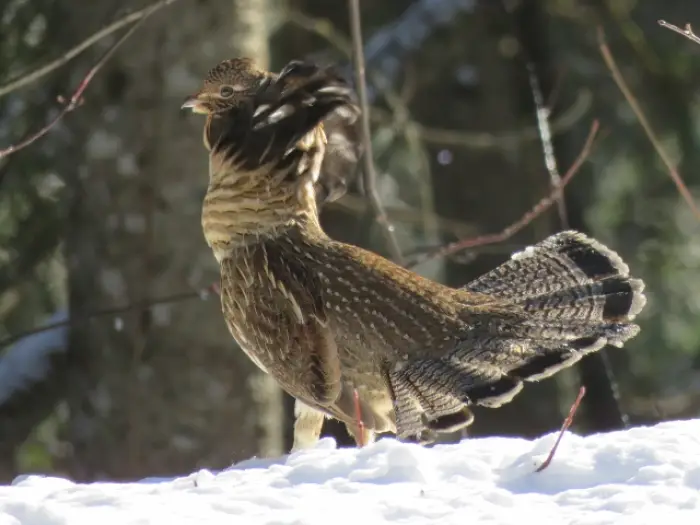
Purple Finches, which over-wintered, are already singing.
Soon, American Woodcocks will be heard. Other early arriving species include Red-shouldered Hawk, Belted Kingfisher, Northern Flicker, Chipping Sparrow and waterfowl such as Wood and Ring-necked Ducks and Pied-billed Grebe.
By April and May, huge waves of migrants return (see my 2017 spring birding blog), including all the colorful warbler species, and every day holds excitement as more and more songs fill our landscape.
Two New Birding Areas in Minerva-North Hudson
The Long Lake-Newcomb-Minerva-North Hudson region of the central Adirondacks has extensive boreal habitat and it is one of the most exciting areas to go birding. This year, birders will be able to explore two new areas in the Minerva-North Hudson region: The Wolf Pond Trail and the Boreas Ponds Tract.
The Wolf Pond Trail is a newly cut 2.4-mile trail that begins at the Boreas River Bridge parking area along the Blueridge Road in Minerva near the town line with North Hudson. It weaves through beautiful boreal habitat. I hiked the trail in August last summer and encountered two flocks of Boreal Chickadees, three Black-backed Woodpeckers (pair with a juvenile), and two groups of Gray Jays.
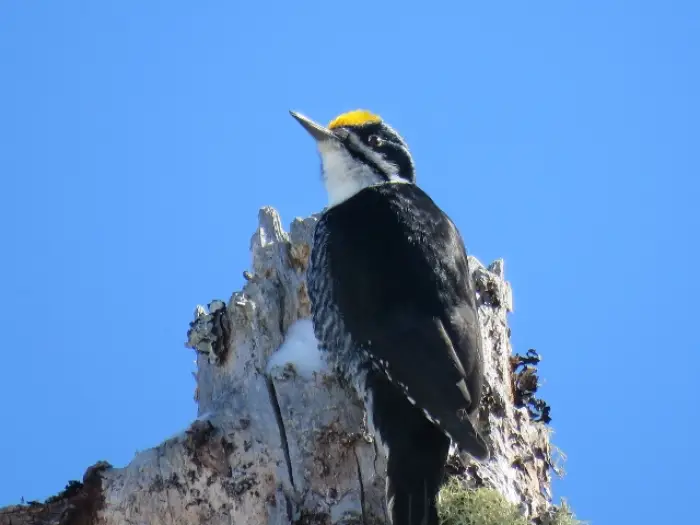
Red Crossbills could be heard singing and calling throughout the hike. The pond is lined with bog mats on its western side. Common Loons nest on Wolf Pond and they were observed diving for fish during my visit. Views of the High Peaks to the north of Wolf Pond are spectacular!
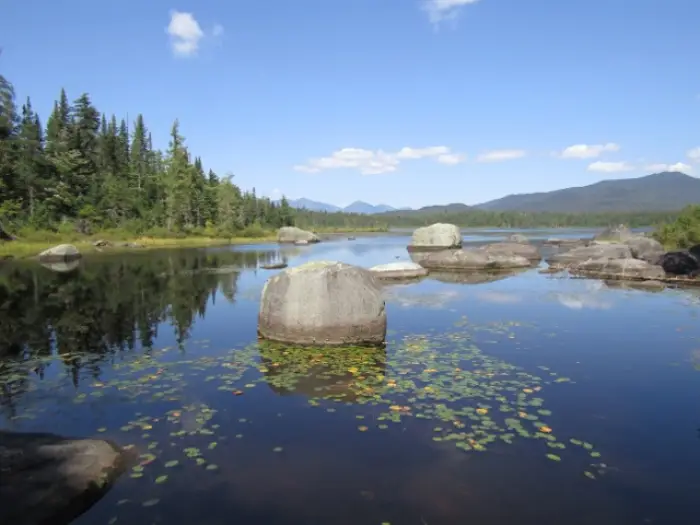
There is a new lean-to near the pond, which makes a nice spot for a food/rest break. In September, together with four others, we canoed Wolf Pond Brook to the pond. This trip was challenging, requiring several bushwhack canoe-carries, but a great deal of fun and it was terrific to be able to paddle Wolf Pond!
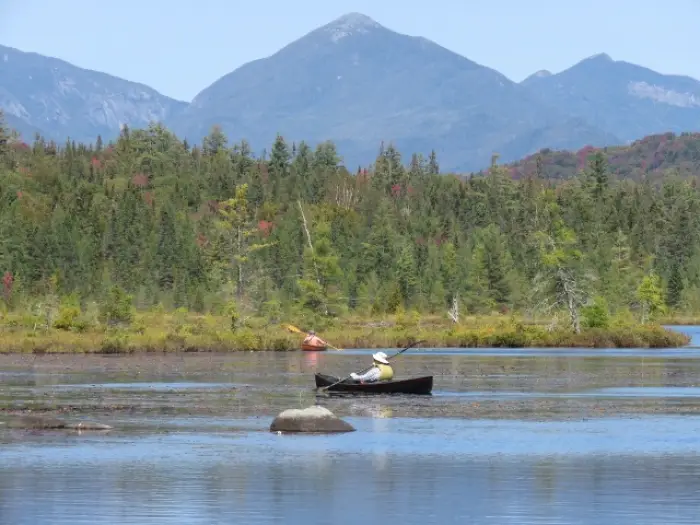
The dirt road to the Boreas Ponds Tract (nearly 21,000 acres) is open to the public, although the lands are in the process of being designated Wild Forest and Wilderness. The planned parking area will eventually be closer to the Boreas Ponds. The current parking area is several miles from the ponds. You can hike or bike from the current parking location.
I biked to the Boreas Ponds in the fall of 2016. There is a great deal of boreal habitat in the vicinity of the ponds. This area will be easier for birders to reach when the new parking lot is completed. Views of the High Peaks are breathtaking, looming above the ponds to the north. This will be a very popular hiking, camping, and paddling area.
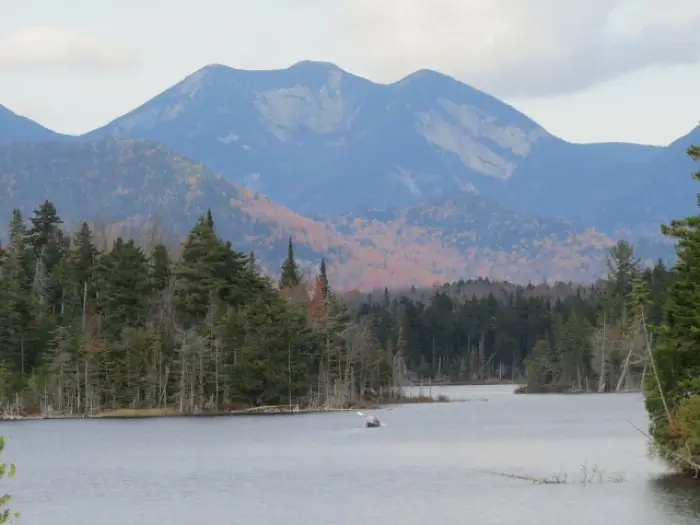
Another Great Boreal Birding Area in North Hudson
Along a straight portion of the Blueridge Road in North Hudson, where it is much easier to park on the shoulder than along the narrow, twisty, western sections of that road, is the Sand Pond Marsh area (formed by the inlet of Sand Pond). This is a wonderful spot to go boreal birding. There are no trails, but much of the land is public and part of the Hoffman Notch Wilderness to the south and Vanderwhacker Mountain Wild Forest to the north.
I have found as many as 20 Boreal Chickadees just walking along the road in this area. Black-backed Woodpeckers and Gray Jays are also regularly found, in addition to all the Red and White-winged Crossbills that nested here last summer and currently this winter-spring. I am a frequent visitor of this exciting boreal location. It is ~ 9.4 miles east of the Blueridge Road–Route 28N intersection in Newcomb.
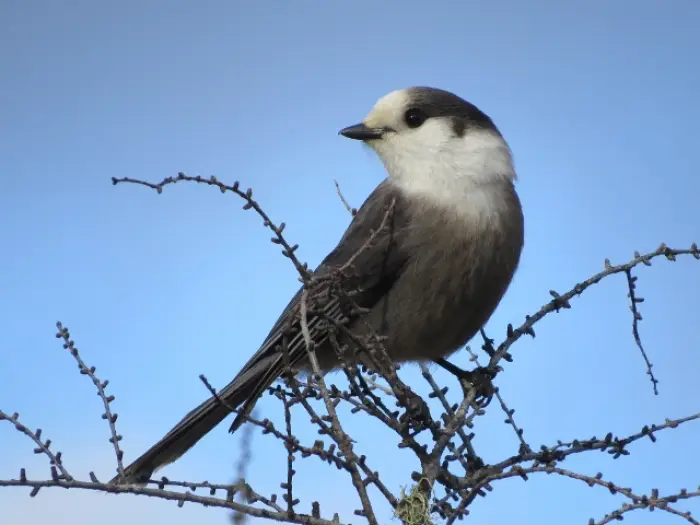
Stay tuned for more birding blogs on the newly acquired state lands, and new hiking and cross-country ski trails, and paddling routes! If you visit this lovely, remote part of the Adirondacks, there are great places to stay and eat in this region.
